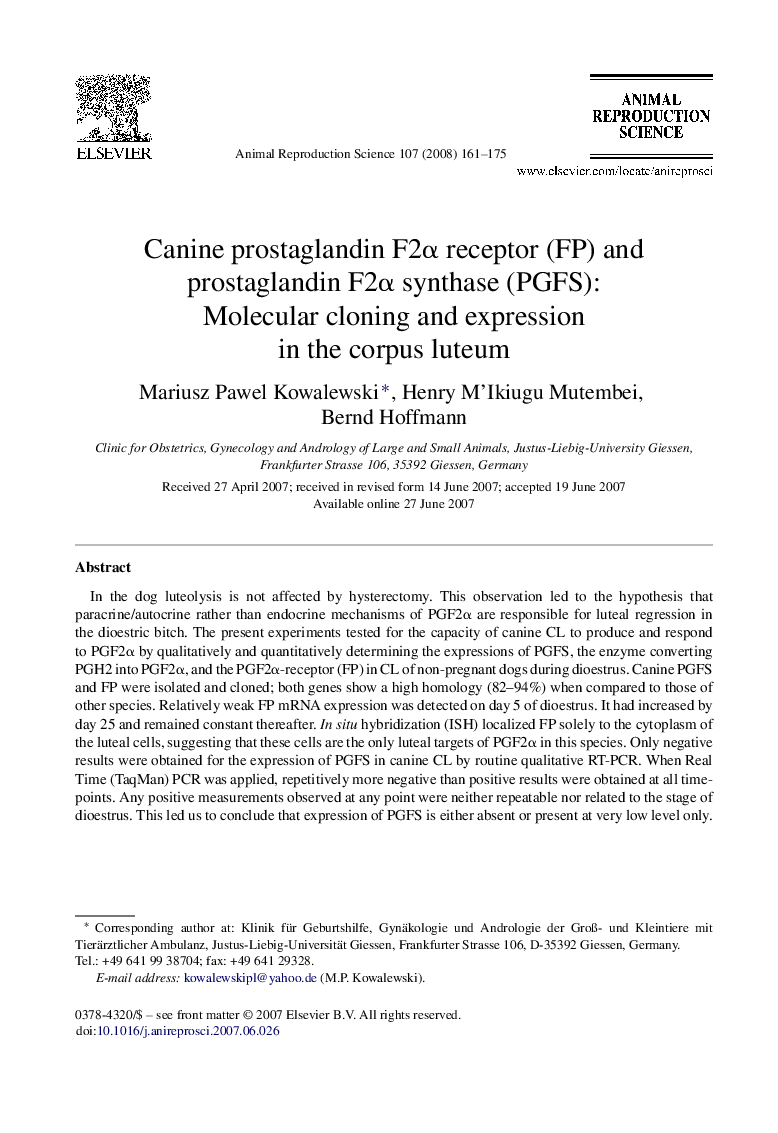| Article ID | Journal | Published Year | Pages | File Type |
|---|---|---|---|---|
| 2074462 | Animal Reproduction Science | 2008 | 15 Pages |
In the dog luteolysis is not affected by hysterectomy. This observation led to the hypothesis that paracrine/autocrine rather than endocrine mechanisms of PGF2α are responsible for luteal regression in the dioestric bitch. The present experiments tested for the capacity of canine CL to produce and respond to PGF2α by qualitatively and quantitatively determining the expressions of PGFS, the enzyme converting PGH2 into PGF2α, and the PGF2α-receptor (FP) in CL of non-pregnant dogs during dioestrus. Canine PGFS and FP were isolated and cloned; both genes show a high homology (82–94%) when compared to those of other species. Relatively weak FP mRNA expression was detected on day 5 of dioestrus. It had increased by day 25 and remained constant thereafter. In situ hybridization (ISH) localized FP solely to the cytoplasm of the luteal cells, suggesting that these cells are the only luteal targets of PGF2α in this species. Only negative results were obtained for the expression of PGFS in canine CL by routine qualitative RT-PCR. When Real Time (TaqMan) PCR was applied, repetitively more negative than positive results were obtained at all timepoints. Any positive measurements observed at any point were neither repeatable nor related to the stage of dioestrus. This led us to conclude that expression of PGFS is either absent or present at very low level only. These data suggest that luteal regression in non-pregnant bitches is not modulated by PGF2α. However, the FP seems to be constitutionally expressed, explaining the receptivity of canine CL to exogenous PGF2α.
